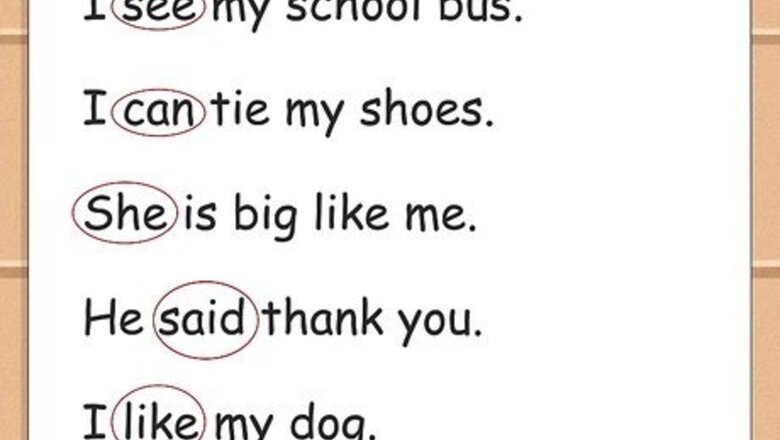
views
Common First Grade Sight Words
a comes his my she used about could how new so very after day I no some was again did if nut such water all different in now take way also do into number than we an does is of that well and down it off the went another each its old their were any even just on them what are find no one then when around first like only there where as for little or these which at from long other they who away get look our things why back go made out think will be good make over this with because had man part three word been has many people through words before have may place time work
Want to practice sight words online?
Try a free month of reading and language arts activities on ABCmouse (then renews at $12.99 per month until canceled). ABCmouse Early Learning Academy’s reading curriculum helps your child in all areas of reading and writing, from learning the names and sounds of each letter to building their vocabulary and reading full paragraphs. With 450 books available and an engaging rewards system to keep your child motivated, ABCmouse makes learning to read and write a fun activity! Enjoy your first month free. Then, it’s only $12.99 per month until canceled. ABCmouse’s full curriculum also offers support in math, science, and arts & colors.
Sight Word Example Sentences

The sentences below contain common sight words. Read these sentences with your child to help them learn sight words, then work together to create some of your own! “I see my school bus.” “I can tie my shoes.” “I know three words.” “She is big like me.” “You are right.” “He said thank you.” “I like my dog.” “Here comes the school bus!” “You are my friend.” “I made eggs because they are yummy.”
Sight Word Learning Games & Activities
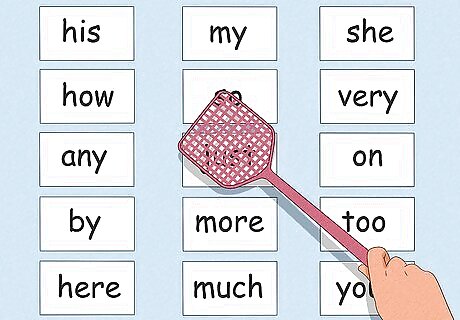
The "find and swat" game Write out 15-20 sight words on separate note cards or sticky notes and arrange them in a grid pattern. Hand your young reader a fly swatter (or any stick-like object) and have them swat the word you’re saying. For an extra challenge, try putting on a timer to encourage them to recognize sight words faster.

Word pancakes Cut out circles of brown or yellow construction paper and write out 15-20 sight words on them. Arrange them on a flat surface (your “stove”) and hand your child a spatula. Say a word and have them flip the “pancake” that has that word.

Find the pom-pom Choose 15-20 sight words and write them on the underside of some paper cups. Turn the paper cups upside down and hide a pom-pom (or any small toy or object) under one cup. Challenge your child to find the pom-pom by recognizing the matching sight word.

Sight word darts Hang a printout of a bullseye on the wall (or draw one on poster board, or make one out of masking tape—the options are endless!). Then, write a handful of sight words on sticky notes and stick them on the dart board. Ask your child to aim for specific sight words with a foam dart gun, bean bags, or any other small toy that won’t damage the walls.
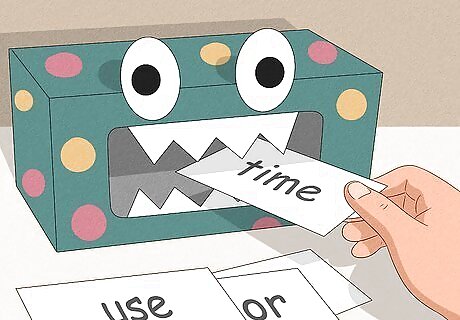
Sight word monster Craft a hungry monster out of an empty tissue box—add googly eyes] paper fangs, or any other features your child likes! Then, instruct your child to “feed” the monster note cards with specific sight words on them through the opening of the box (the monster’s “mouth”).

Sight word bowling Write out 10 sight words on note cards or sticky notes and attach or stick them to bowling pins (or half-filled plastic water bottles). Call out a sight word and have your child try to knock over the matching pin by rolling a ball at it.
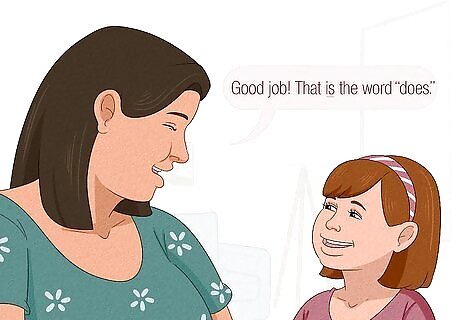
More tips: Introduce new sight words by themselves first, then follow up right away with sentences, books, or other materials that use them. Try not to introduce two sight words that look similar or can be easily confused in the same lesson or session. For example, space out words like “will” and “well” or “me” and “my.” Keep sight word sessions short but frequent (for example, only 10 minutes a day, most days of the week). See how your child responds before trying longer or shorter sessions. Give immediate, specific feedback while your child practices. For example, if they pronounce “does” correctly, say “Good job! That is the word ‘does.’” If they pronounce it incorrectly, say “That word is ‘does.’ Let’s say the word ‘does’ together.”
How many sight words should a first-grader know?
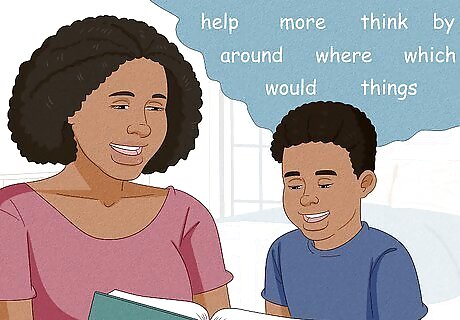
Most children know about 100 sight words by the end of first grade. There’s no “correct” number of sight words to know since each child learns and develops differently. A general rule of thumb as your child starts reading is to teach a handful of very common sight words in Pre-K, about 20 sight words in Kindergarten, and 100 in first grade. It’s better for a child to fully grasp fewer words than to only kind of know a lot of words. In other words, don’t stress if your child can’t recognize 100 words in first grade—focus on strengthening the words they do know to help teach them to read more effectively.
What are sight words, exactly?
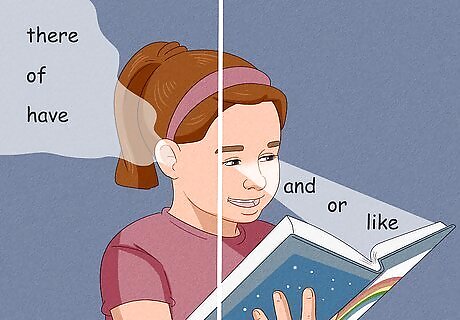
Sight words are common words that can be recognized automatically. When a beginning reader has a large vocabulary of simple sight words under their belt, they can devote more time and energy to understanding hard or new words (and can read more quickly and easily overall). There are two types of sight words: High frequency sight words occur very often in printed English. They can be sounded out easily, but recognizing them by sight allows for faster reading (for example, “and,” “or,” “like”). Irregular sight words also occur frequently but are harder to sound out because they don’t use typical letter sounds (for example, “there,” “of,” “have”). Recognizing these automatically saves time and brain power while reading.
Sample Sight Word Lists
Various educators and learning experts have created slightly different sight word lists over the years, although many of the words overlap. Above you’ll see PDFs to three of the most popular sight word charts. This includes: Dolch list: Educator Edward Dolch created this list in the 1930s based on popular children’s books of the time, and it’s still one of the most popular sight word lists today. Fry list: Another popular sight word list created by Dr. Edward Fry. Fry developed this more modern and comprehensive list (last updated in the 1980s) based on reading materials for grades 3-9. Math sight words: This list contains sight words children encounter frequently when learning math.















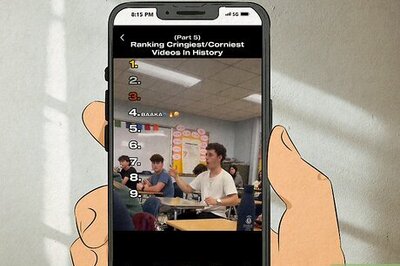

Comments
0 comment